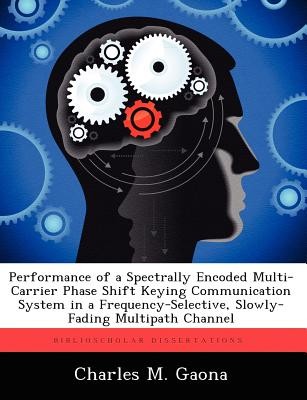
- We will send in 10–14 business days.
- Author: Charles M Gaona
- Publisher: BiblioScholar
- ISBN-10: 1249587867
- ISBN-13: 9781249587866
- Format: 18.9 x 24.6 x 0.8 cm, softcover
- Language: English
- SAVE -10% with code: EXTRA
Performance of a Spectrally Encoded Multi-Carrier Phase Shift Keying Communication System in a Frequency-Selective, Slowly-Fading Multipath Channel (e-book) (used book) | bookbook.eu
Reviews
Description
This research examines the performance of a spectrally encoded, multi-carrier, phase shift keying communications system in a frequency-selective, slowly-fading multipath channel. The specific communications system modeled is the transform domain communication system (TDCS) originally researched as an interference avoidance technique. Previous TDCS research assumed an additive white gaussian noise channel, which is not representative of a realistic environment. This thesis presents overviews of previous TDCS research, the multipath fading channel, and the RAKE receiver. Analysis and Matlab simulations compare the performance of spectrally encoded and un-encoded signals through a multipath fading channel using an L-diversity TDCS RAKE receiver. Encoded signals take on the spectral shape of the multipath fading channel transfer function. Un-encoded signals have a flat magnitude spectrum. The research also evaluates the interference rejection capability of spectrally encoded signals in a multipath channel. Research results indicate for diversities ranging between 2 and 50, spectrally encoded signals need 1.0 to 2.75dB less transmitted normalized bit energy to noise power spectral density ratios to achieve the same probability of bit error as un-encoded signals. Results also demonstrate that spectrally encoded TDCS signals retain the interference rejection capability.
EXTRA 10 % discount with code: EXTRA
The promotion ends in 19d.10:06:05
The discount code is valid when purchasing from 10 €. Discounts do not stack.
- Author: Charles M Gaona
- Publisher: BiblioScholar
- ISBN-10: 1249587867
- ISBN-13: 9781249587866
- Format: 18.9 x 24.6 x 0.8 cm, softcover
- Language: English English
This research examines the performance of a spectrally encoded, multi-carrier, phase shift keying communications system in a frequency-selective, slowly-fading multipath channel. The specific communications system modeled is the transform domain communication system (TDCS) originally researched as an interference avoidance technique. Previous TDCS research assumed an additive white gaussian noise channel, which is not representative of a realistic environment. This thesis presents overviews of previous TDCS research, the multipath fading channel, and the RAKE receiver. Analysis and Matlab simulations compare the performance of spectrally encoded and un-encoded signals through a multipath fading channel using an L-diversity TDCS RAKE receiver. Encoded signals take on the spectral shape of the multipath fading channel transfer function. Un-encoded signals have a flat magnitude spectrum. The research also evaluates the interference rejection capability of spectrally encoded signals in a multipath channel. Research results indicate for diversities ranging between 2 and 50, spectrally encoded signals need 1.0 to 2.75dB less transmitted normalized bit energy to noise power spectral density ratios to achieve the same probability of bit error as un-encoded signals. Results also demonstrate that spectrally encoded TDCS signals retain the interference rejection capability.


Reviews